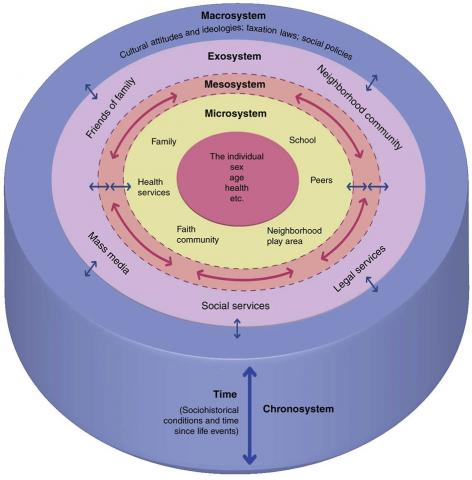Resource: Research overview
Learning activity 2 – Reflection and relation exercise
The following reflection prompts relate content from the research and review questions to your own school context. You can reflect on these by yourself, or discuss them with your colleagues.
-

Adapted from Bronfenbrenner’s ecological theory of child development (Source: Santrock, 2014, p.27) Bronfenbrenner’s ecological theory acknowledges that individuals are positioned within their own complex systems of influence. Have another look at Bronfenbrenner’s model (right).
- Imagine yourself at the centre of the model. What are the influences on your life? What do you influence?
- Imagine some of your students at the centre of the model. What are the influences on their lives? How different are the influences from student to student? What are they able to influence?
- Research shows that teachers generally judge transition success via academic progress and attainment whereas students generally judge success via social and emotional factors. Thinking about the students you teach who are in Year 6 or Year 7:
- How do you currently judge their transition success? Do conversations around transition success happen at your school?
- How do you think your students judge their transition success?
- With regard to academic outcomes, engagement and motivation, research findings are “mixed”. This conundrum may be present because the research attempts to assign cause-and-effect in a complex environment where there are multiple influences.
- What do you think of the academic-decline narrative?
- If you are in a secondary school, is this evident with the newly transitioned students?
- If you are in a primary school, do you think your students’ academic achievement will plateau or decline for a period of time after transition?
- How do you perceive student academic engagement and motivation in your school? Do you think a sense of belonging to school might encourage engagement or motivation?
- What do you think of the academic-decline narrative?
- What is the school structure in your location? For example, K–6 & 7–12; K–6, 7–9, 10–12?
- Do you think this structure suits the majority of pupils? Why or why not? What are the transition implications?
- If you had the opportunity to restructure, what would you do and why?